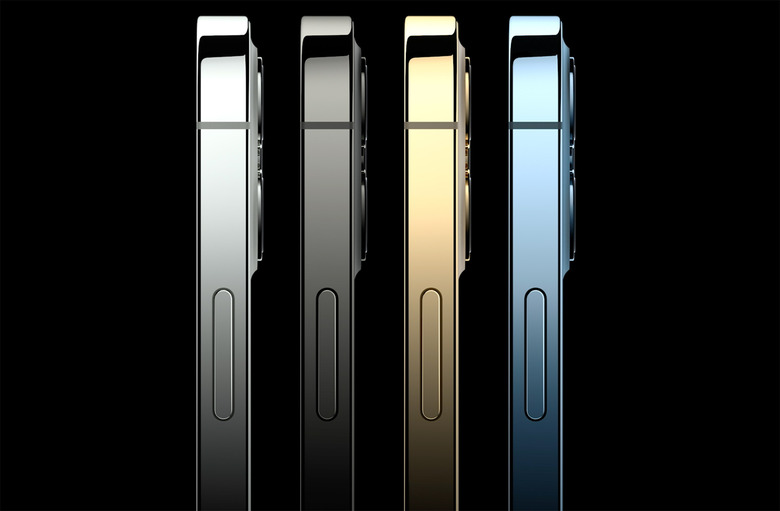You Won't Believe The Results Of The First iPhone 12 Drop Test
- The first iPhone 12 and iPhone 12 Pro drop test shows that Apple's drop performance claims are real.
- The new iPhones appear to prevent accidental glass damage much better than earlier models.
- Ceramic Shield glass withstands drops from up to 10 feet without damage.
- A case and screen protector are still advised, as dents and scuffs can still mar the metal frame.
The iPhone 12 series features a brand new design that's reminiscent of the iPhone 4 from back in 2010. The metal chassis has flat edges rather than the curved border that Apple introduced with the iPhone 6, and the glass on the iPhone 12 is perfectly flat as well. These changes are supposed to improve the iPhone's durability and allow it to resist drops better than before.
It's not like previous iPhone models were overly frail. In fact, drop tests showed that iPhones were able to sustain more damage than rival handsets from Android phone makers. But the iPhones are made of glass, and glass can always break. In addition to the iPhone 12's metal frame redesign, Apple also made changes to the glass. Ceramic crystals are embedded in the glass above the screen, which has a new marketing name: Ceramic Shield. The screen should deliver "4x better drop performance," according to Apple. That means little when said on stage or read off of an iPhone 12 specs sheet. But the first iPhone 12 and iPhone 12 Pro drop test shows exactly what that means — and you won't believe how well Apple's new iPhones perform.
YouTuber EverythingApplePro put both the iPhone 12 and iPhone 12 Pro through the same drop tests. As a reminder, the two phones are nearly identical. They have the same size, but the Pro is slightly heavier at 189 grams compared to 164 grams for the iPhone 12. That's because the iPhone 12 Pro features a heavier stainless steel chassis, just like the Pro Max. The iPhone 12 comes with an aluminum frame, and so does the upcoming iPhone 12 mini.
As you will see in the video at the end of this post, both iPhones performed incredibly well. It's not just the front glass that survived all the drops without a crack, but the dual-ion rear panel wasn't damaged either. The glass on the back should theoretically be more prone to damage than the front panel, as it lacks ceramic particles.
The two iPhones survived drops on all sides from various heights, including from waist level and head height. Those are likely scenarios where drops can occur. While the glass does survive with no cracks, you can still expect damage to the metal frame if you drop the phone on a hard surface. Also, the OLED screen under the Ceramic Shield glass might see some damage. In other words, you should still consider using a screen protector and a case for the iPhone 12.
The drop tests prove that the Ceramic Shield isn't just a marketing gimmick. The more durable glass does work — anecdotal evidence from social media indicates that it might scratch easier, however. What these tests also highlight is that the phones will deal with landings better than before. Apple's other recent iPhone models have all featured glass with slightly curved edges on the front. While it's definitely a stylish and comfortable design, curved edges also compromise the integrity of the glass. It's probably not a coincidence that Samsung has significantly reduced the edge curvature of its displays over the years.
The YouTube clip goes beyond 6-foot drops and shows that the back glass and the Ceramic Shield glass can break if dropped from 10 feet. That's probably the kind of accidental drop that not many people need to worry about. That said, the mileage may vary, and not all drops will resemble what you're about to see in this test. You might damage the screen from a lower height. Or you might damage the metal frame, and those dents and scuffs can be quite ugly. So, again: glass is glass and it can break, and polished metal can scuff. Your best bet is to use a protective case and a screen protector on top of the screen.
Apple has also revealed how much it costs to repair the iPhone 12 and iPhone 12 Pro screen. You'll have to pay $279, regardless of model, and that's the out of warranty fee. It's $29 if you have AppleCare+. Should the rear-facing panel break, you're looking at additional expenses that might fall under the "other" category. Apple says that "other damage" repairs will cost $449 (iPhone 12) and $549 (iPhone 12 Pro). That drops to $99 with AppleCare+.
